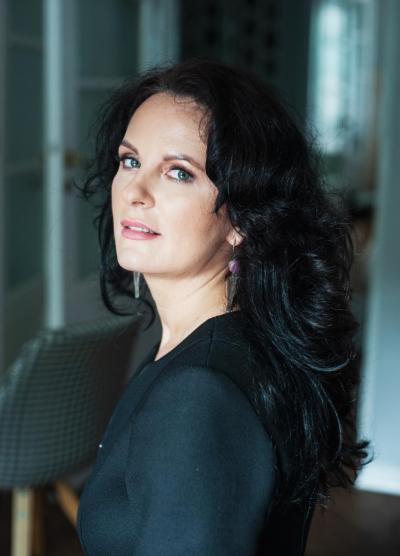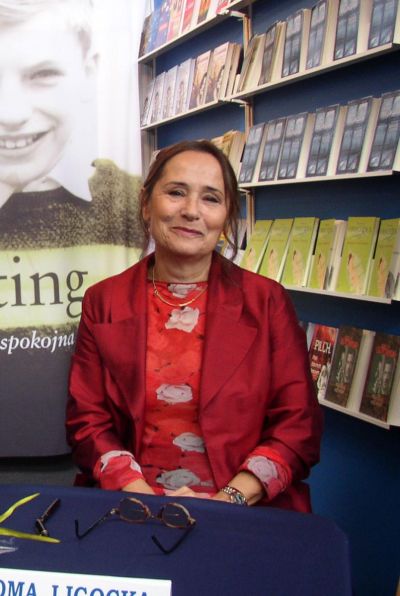Magdalena Parys

The subjects that Magdalena Parys deals with are not easy. Even as a child she was writing stories that made her mother ask the question: “Why do you have to be so bleak?” To this day, dark chapters, predominantly from German history, play on her mind. Her novels “The Tunnel” (2011) and “The Magician” (2014) begin with criminal cases in the present day. But the investigations lead back to the depths of history and are testimony to the author’s meticulously precise research. Ultimately, neither of the two books are a classic crime drama or an historical novel. Instead, in these books Parys uses historical events to explore the abysses of systems that have been created by humans, but at the same time have a great influence on humans. And although he only plays a background role in her novels to date, Magdalena Parys is particularly fascinated by Reinhard Gehlen. Born in Erfurt in 1902, he was the founder of “Organisation Gehlen” which spawned the Federal Intelligence Service in 1956. Supported by the USA, one of the occupying powers, Gehlen headed up this German secret service until 1968. For Parys, this former major general of the Wehrmacht, who built up an anti-communist secret service with the assistance of the American government, embodies the major lines of conflict and contradictions of the 20th century. But where does the author’s interest in the battle of the systems, like the one that endured during the Cold War, actually come from?
Magdalena Parys was born in Gdansk in 1971. Because her parents separated when she was still a child, she grew up in the house of her grandparents on her mother’s side in Danzig-Langfuhr and in her stepfather’s parents’ house in Szczecin. “It is strange,” she says when recalling the memories of her childhood. “Whilst I remember Gdansk like a wonderful colour film, for me when I look back, Szczecin is black and white and forlorn.” Magdalena Parys was nine years old when local strikes starting in Gdansk spread across the whole country . The catalyst was the increase in the price of meat. However, the strikes allowed a much deeper frustration to be offloaded against the system that many held to be repressive. From these strikes emerged the Solidarność (“Solidarity”) trade union which, under the leadership of Lech Wałęsa, developed into the central movement for reform and revolution in Poland. Her mother in particular, who had initially studied theatre studies in Szczecin before training as a primary school teacher, believed that freedom was the ultimate good – and the Polish system was not free. She stood resolutely behind Solidarność. As a child, Magdalena Parys did not question these attitudes. Even after escaping to West Berlin, she still thought that everyone in Poland held the same beliefs as her mother. But because this not the case at all, her mother and her new partner decided to “go over the wall”, whilst Magdalena’s father remained in Szczecin as a teacher and became increasingly active for the environment. Her stepfather’s mother was German. She had met a charming Polish forced labourer in her parent’s company during the war whom she later married. She went with him to Szczecin, which at the time still belonged to Germany before being given to Poland after the Second World War.
According to Magdalena Parys, this automatically made “Oma Rita” a traitor in the eyes of the German authorities and her citizenship was withdrawn. Nevertheless, her stepfather still managed to get an invitation to West-Berlin from German friends. Both he and Magdalena’s mother were issued with papers for the visit by the Polish authorities.
This was not the case for Magdalena Parys and her half-brother Michael , who was 10-years younger. She remained at her grandparents’ house in Szczecin and time and again had to make humiliating approaches to the authorities. According to Magdalena, instead of dealing with pleasant civil servants, she had to deal with soldiers who thought it was right to harass a child in order to put pressure on her mother. In the meantime, her mother organised a means of escape for Magdalena and her brother, who was only three at the time. Contacts enabled her to convince an opposition activist to bring Magdalena and Michael to West Berlin during one of his border crossings. She was not allowed to take much with her so that she did not arouse the suspicions of the border officials. Magdalena Parys remembers this trip as a nightmare: “It was just before Christmas Eve, the border seemed deserted, but the soldiers and dogs made me really scared. My little brother was paralysed by fear.” She remembers how the border officials took their ‘travel guide’s car apart and how sinister the sheepdogs appeared. She could not help but think about the many terrifying stories of the Nazis that people in Poland liked to tell. But everything went well and Magdalena Parys arrived in West Berlin. However, she was unable to understand her mother and stepfather's enthusiasm. She missed her friends, her grandparents, her familiar environment. She now lived in cramped conditions in a refugee home at Tempelhofer Ufer. The fridge was in the corridor and she had to share a kitchen and bathroom with others. Magdalena Parys did not really notice this much vaunted freedom. On the contrary, to her West Berlin seemed like a big open-air prison which sooner or later ended at the Wall. Magdalena Parys found reading and writing stories liberating, particularly during that first upsetting period in West Berlin. Literature gave her the scope that she was missing in her everyday life.


